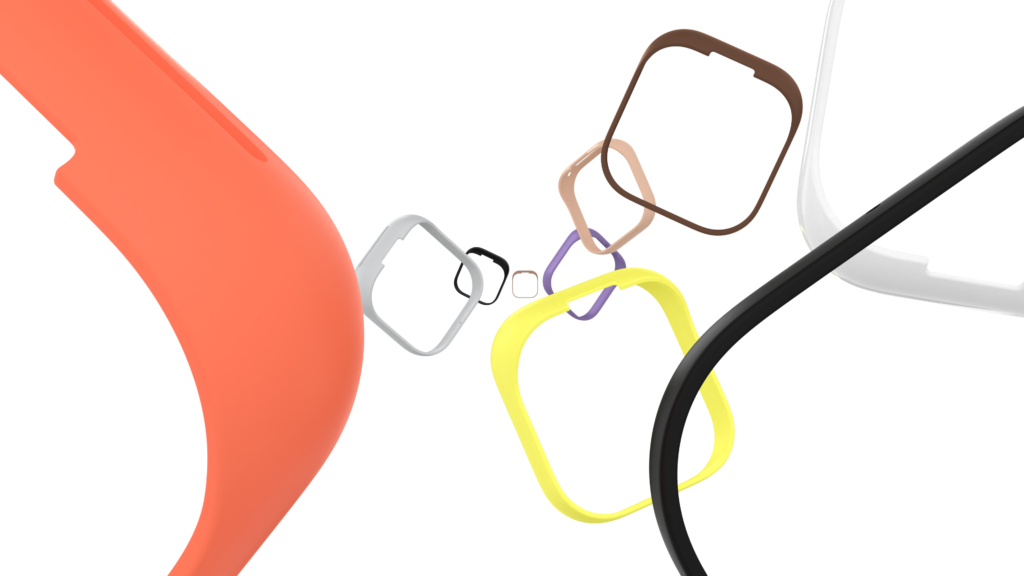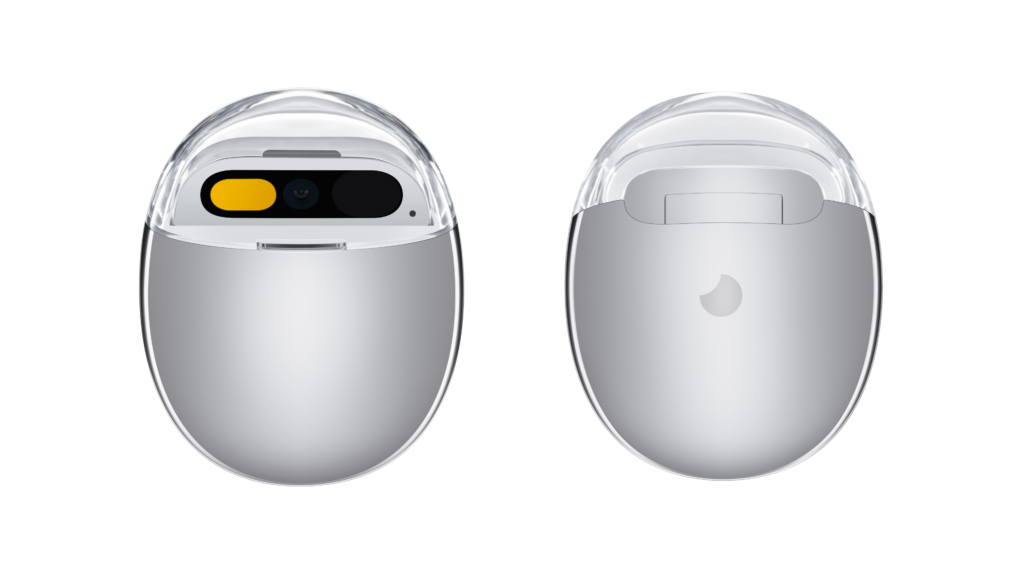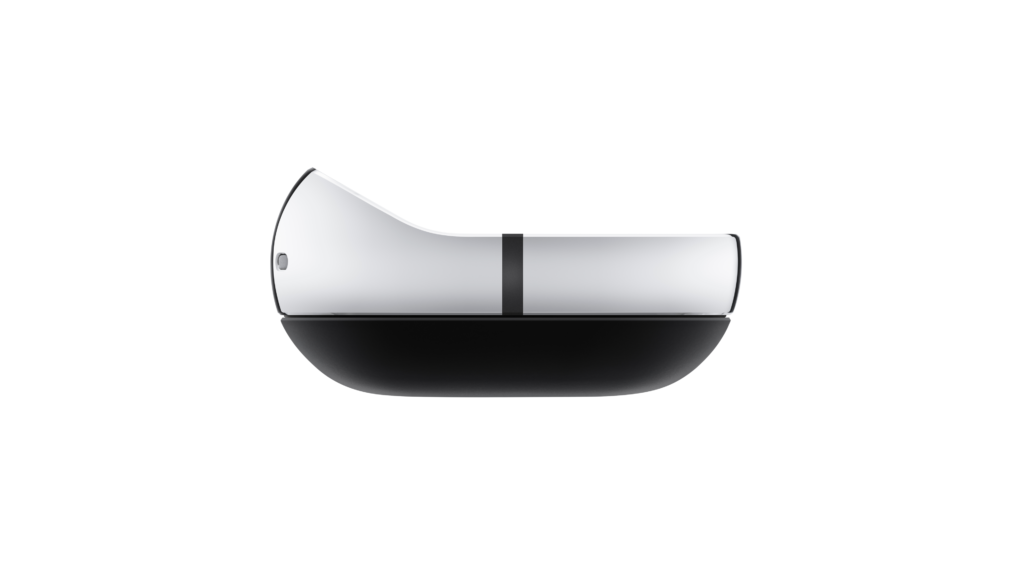The wearable will replace the smartphone. This concept, repeated for months before the official presentation, was enough to create uncommon hype for AI Pin, the mini-device made by Humane, which attaches to the wearer’s jacket, shirt or sweater and collects data, faces and voices via an integrated camera, microphone, depth and motion sensors. As the name suggests, the square device is based on artificial intelligence, will be available in the three colours Eclipse, Equinox and Lunar and will be available to order from 16 November, for now only in the US.
It does not have a screen but a Qualcomm Snapdragon chip that processes intercepted information. At the same time, the user experience involves the use of headphones or earphones via Bluetooth to connect the device with the owner, who can use voice to manage the wearable functions. But it remains a stand-alone device, not needing to be paired with another accompanying device.
Two crucial elements of AI Pin: battery and laser
AI Pin consists of two parts: the main computer and a battery connected magnetically and powered wirelessly through the clothing. This makes it possible to wear the device in various ways, but also to have it always ready for use, as there is also a battery booster to change the battery in just a few moments and any situation so that there is always enough autonomy to keep the clip active. As mentioned, one of the device’s peculiarities is the lack of a screen. This element could apparently make the ambition of the startup that developed it to replace the phone impossible.
AI Pin’s solution lies in a touchpad and the possibility of using gestures, but above all, in the Laser Ink Display, which projects the text of an incoming call onto the palm. For data management, like photos, videos and text notes, the device connects to the Humane Centre, the platform the company says will be the central hub for all AI Pin users.



Light alerts others to recordings
Based on Cosmos, a proprietary operating system devoted to AI that, the startup says, ‘eliminates the need to download, manage or launch apps because it can quickly understand what you need, connecting you to the right AI experience or service instantly’. This is a turn of phrase not to go into detail, which reinforces the need to test the device in the field to discover the real user experience and its actual degree of intelligence. As has been the case before, AI Pin uses the built-in camera to record the faces of people in the vicinity and scenes that occur near the wearer. When it starts filming, a light is triggered to alert others to the action. However, this remains a theoretical belief, as it assumes that whoever ends up in the frame is familiar with the device, as small as it is currently unknown.
A different case and an object less conspicuous in size than a smartphone or a pair of glasses, such as the Ray-Ban Stories signed by Meta and EssilorLuxottica, signal the start of a video with a white light appearing on a corner of a lens. In short, the future of the concept of privacy remains uncertain. To dampen potential protests to some extent, Humane said that the device only activates the microphone to record what is said when it is active. However, as always with new and unfamiliar devices, one really has to understand how they behave in the everyday context before making judgements.
The partnership with OpenAI and Sam Altman
In this sense, it should also be noted that among the functions of AI Pin are real-time translation and the ability to recognise certain foods that the user holds to provide the relevant nutritional values. Partners include Tidal, which promises a new, AI-driven listening experience’, with owners of the clip who, according to Jesse Dorogusker, CEO of Tidal, will be able to ‘play music in line with the context they are in, finding the appropriate tracks to enhance the moment‘.




Speaking of partnerships, the most significant for Humane are those with Microsoft and OpenAI, which allow the device to have ‘access to some of the most powerful AI models and platforms in the world and lay the groundwork for adding new features as the technology evolves’. The proximity to the company that developed ChatGPT should come as no surprise since owning 14% of the shares, Sam Altman, CEO of OpenAI, is currently Humane’s largest shareholder.
Great hype, maybe too much?
This detail also helps to understand the enormous anticipation that accompanies Ai Pin’s arrival. It is not often that a small startup manages to raise more than $230 million in a short period, including a $100 million Series C round that closed last March.
A large part of the reason lies in the skills of Humane’s two founders, Bethany Bongiorno and Imran Chaudhri, a couple in life as well, who spent several years at Apple (8 years for her, 20 years for him), holding the positions of director of software engineering for both iOS and macOS and designer. But that’s not all, because also facilitating word of mouth about the design of a never-before-seen device were the more than 80 former Apple employees who collaborated with the startup team and other engineers from Google and Sony.


How much it costs the AI Pin
“AI Pin embodies our vision of integrating AI into the fabric of everyday life, enhancing our capabilities without overshadowing our humanity,” said Bongiorno and Chaudhri, hopeful of achieving the success they have been dreaming of for the past four years, the four years they have spent developing the device.
This is a hypothesis on which it is difficult to speculate because AI Pin is on sale for $699, with the package also including the charger and two clips/batteries (which suggests a limited autonomy per single charge). To get the most out of it, however, you have to add a $24 per month subscription, which includes a phone number for calls, mobile data and cloud storage of photos and videos.



